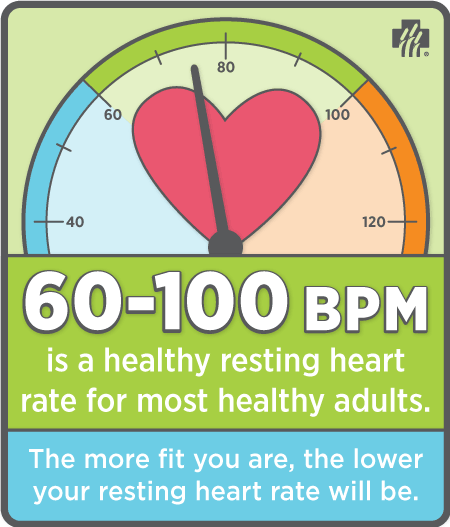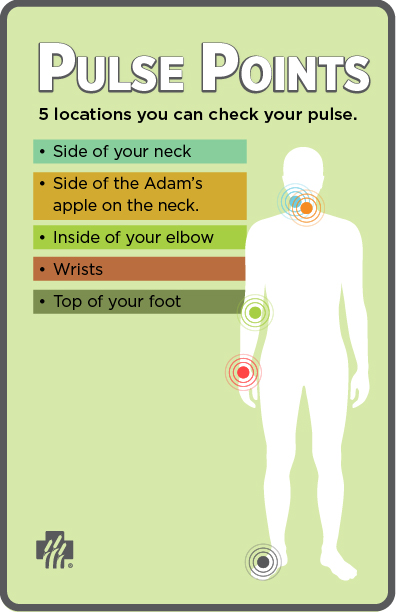 Think of your heart rate as a speedometer, like the kind in your car, that tells you how fast or slow your car moves or how fast or slow your heart beats.
Think of your heart rate as a speedometer, like the kind in your car, that tells you how fast or slow your car moves or how fast or slow your heart beats.
“How fast your heart beats is a vital sign that helps us assess your heart’s performance. It’s one of the oldest recognized key factors in evaluating your heart,” said Jessica Takach, cardiology nurse practitioner at Marshfield Clinic Health System.
Normal heart rate, or pulse, is 60 to 100 beats per minute (BPM) for adults. It is not usually a concern if it goes a bit below 60 but if it rises above 100, it can be a sign that something is wrong. Takach said possible problems could be:
- Heart disease/congestive heart failure
- Anemia (overall weakness)
- Thyroid problems
- Lung function issues like COPD/emphysema
- Acute and chronic pain
- Anxiety or panic attacks
- Fever/infection
Checking your heart rate
You can take your pulse at the:
- Wrists
- Inside of your elbow
- Side of your neck
- Top of your foot
- Side of the Adam’s apple on the neck.

Practice finding your pulse, especially before starting an exercise program. Hold a finger over the spot and count the number of beats in 60 seconds or count for 15 seconds and multiply by four.
RELATED ARTICLE: Exercising regularly? Understand your target heart rate.
If you are monitoring heart rate, Takach said you should once a day, at the same time each day. You should not have exercised or consumed caffeine or nicotine for at least 30 minutes prior to taking your pulse. Takach also said you should sit upright with feet flat on the floor and arms at chest level, like resting on a table, for 5-10 minutes before checking pulse or blood pressure.
“If you feel like you received an inaccurate reading, wait a minute or two and check it again,” Takach said. “You should also write down your results. There is no sense in taking measurements unless you are going to keep a log.”
Smart phones, blood pressure monitors and other digital devices can help monitor your heart rhythm and pulse as well, but Takach warns patients to be careful when interpreting all this data.
“You can capture this data, but patients should still talk to providers about what that data means,” Takach said.
Routine monitoring does not need to be done unless you are instructed to do so by your provider, have a family history of heart disease or are on certain medications that could cause heart disruptions.
Prescribed heart monitoring equipment
For patients with more serious heart rhythm issues, your provider may send you home with equipment that monitors your heart and can relay that data back to your care team.
“With that equipment, we receive tracings of the patient’s heart rhythm,” Takach said. “Patients also can use the equipment to indicate symptoms they’re having.”
This equipment must be ordered by your provider.
Patients wear this heart monitoring equipment around the clock. Some monitors are prescribed for 48 hours and others may be prescribed for a month. You can remove the equipment for things like showering, but the more frequently it is worn, the more information your care team has.
Certain heart activity will trigger alerts so staff know to review the data and possibly check on the patient.
Learn more about heart rates from Dr. Yusuf Kasirye, internal medicine at Marshfield Clinic, in this video.
To learn more about your heart rate, talk a Marshfield Clinic Health System provider.
Schedule an appointment Message your provider
Related Shine365 articles
Cardio vs. lifting: What’s the best exercise for heart health?






Leave a Reply